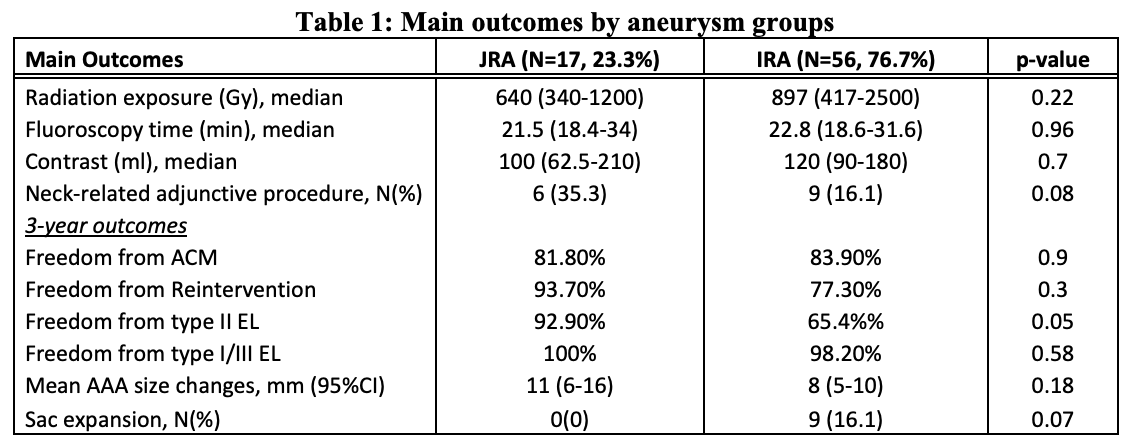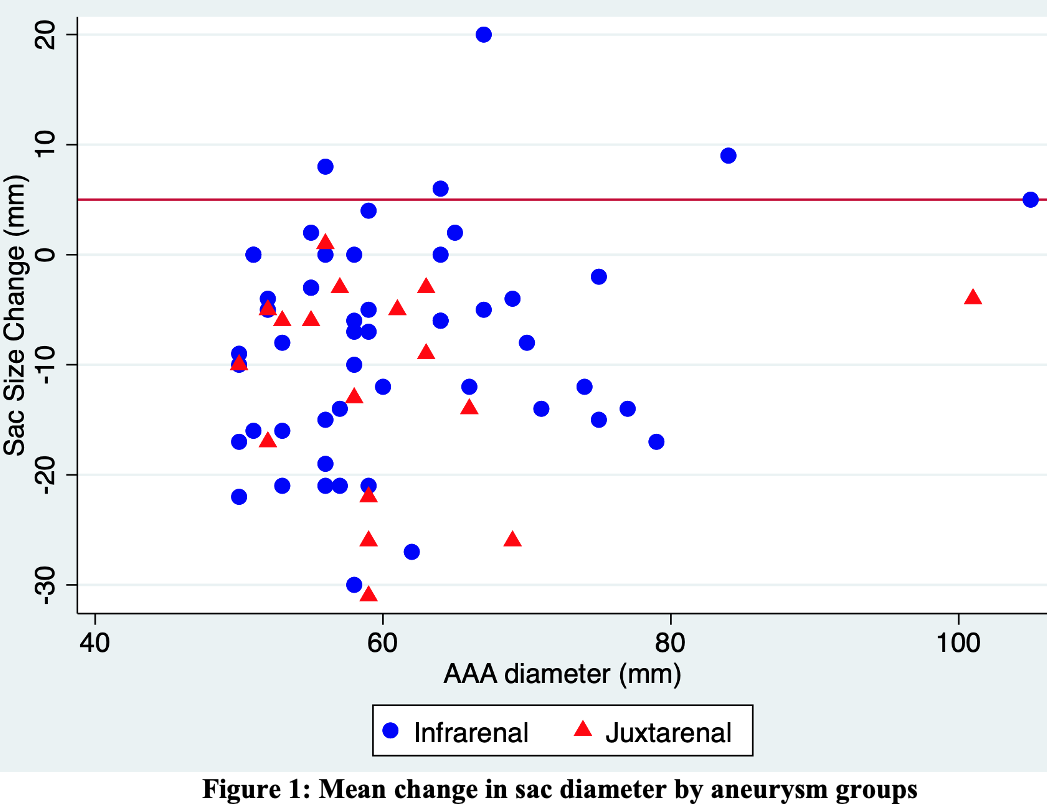OBJECTIVES: In cases of juxtarenal abdominal aortic aneurysms (JRAs), endovascular repair usually involves the use of fenestrated endografts (fEVAR) which need large-diameter access vessels, renal stents, higher costs, and extra time between planning and delivery. We report our experience using the Ovation stent graft in select JRAs in patients who were poor candidates for open surgery. METHODS: We conducted a retrospective review of all patients who underwent EVAR with the Ovation endograft between 2017 and 2022. Patients were divided into JRA (parallel neck≤4mm) and standard infrarenal (IRA) groups. Use of the Ovation stent graft required sizing of 31 mm or less at 5 - 7 mm below the renal arteries.Endpoints included neck-related adjunctive procedures (Palmaz or renal stent), freedom from type I/III endoleak, type II endoleak, reintervention, sac growth and all-cause mortality (ACM). RESULTS: A total of 73 patients were included in the study, of which 17(23.3%) had a juxtarenal aneurysm.Median follow-up was 34 months (13-50 mo). Patients in the JRA group were more likely to require a neck-related adjunctive procedure (53.3%vs.16.1%, P=0.08). All aneurysms in the JRA group remained stable in size or demonstrated regression, whereas aneurysm sac expansion was seen in 16.1% of the IRA group, P=0.07 (Figure 1). This was largely driven by a higher rate of type II endoleak in the IRA group (34.6% vs 7.1% at 3 years, P=0.05).There were no differences in the 3-year freedom from type I/III endoleak (100% vs 98.2%, P=0.5), reintervention (93.7% vs 77.3%, P=0.3) or ACM (81.8% vs 83.9%, P=0.9) between the JRA and IRA groups, respectively (Table 1). CONCLUSIONS: These results suggest that in certain patients with JRAs where the graft will fit, the use of the Ovation stent graft may provide an alternative to fEVAR avoiding increased risk to access and renal vessels. This study demonstrates safety and efficacy using this graft in JRAs and justifies larger scale studies to solidify which patients can benefit most. 
